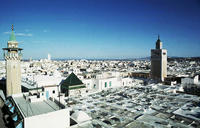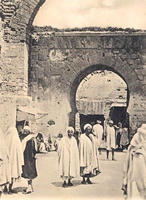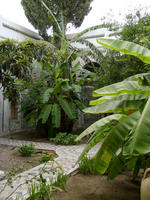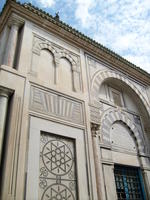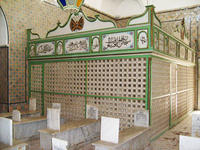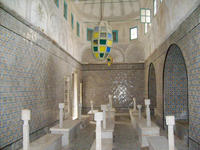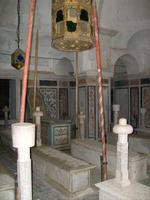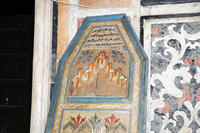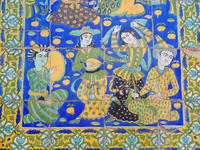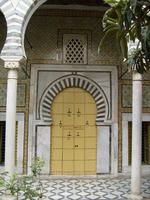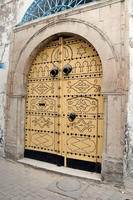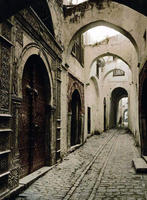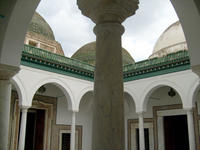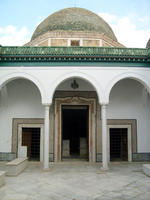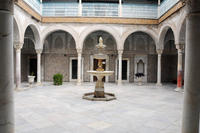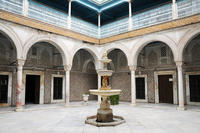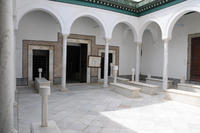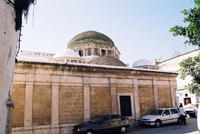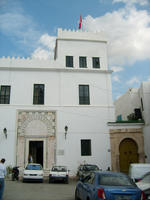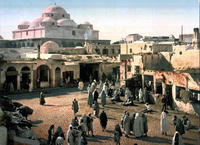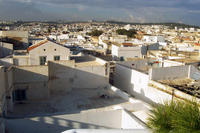You are in: Africa -> Tunisia -> Medina of Tunis, and traditional search or Image Gallery will yield results of this site only
Medina of Tunis
| Site number: | 36 |
|
| Type of site: | Cultural | |
| Date: | 12-16th century | |
| Date of Inscription: | 1980 | |
| Location: | Africa, Tunisia, Tunis | |
Up to 75 images are shown here. Click on each for more details or on Image Gallery for more images.
Six official UN languages:
Arabic,
Chinese,
English,
French,
Russian,
Spanish
Other languages: Bosnian, Bulgarian, Catalan, Croatian, Czech, Danish, Dutch, Farsi, Finnish, German, Greek, Hebrew, Hungarian, Indonesian, Italian, Japanese, Lithuanian, Norwegian-bokmål, Polish, Portuguese, Romanian, Swedish, Welsh
Other languages: Bosnian, Bulgarian, Catalan, Croatian, Czech, Danish, Dutch, Farsi, Finnish, German, Greek, Hebrew, Hungarian, Indonesian, Italian, Japanese, Lithuanian, Norwegian-bokmål, Polish, Portuguese, Romanian, Swedish, Welsh
| Description: | Tunis was deemed one of the greatest and wealthiest cities in the Islamic world when it was under the reign of Almohads and the Hafsids (in the 12th-16th centuries). Indicative of this notable past are the roughly 700 monuments, consisting of palaces, mosques, mausoleums, madrasas and fountains. --WHMNet paraphrase from the description at WHC Site, where additional information is available. | |
| Tunis (Arabic: تونس, Tūnis) is the capital of the Tunisian Republic and also the Tunis Governorate, with a population of 728,453 in 2004. Informal estimates state that the population of greater Tunis approaches two million. Situated on a large Mediterranean gulf, (the Gulf of Tunis), behind the Lake of Tunis and the port of La Goulette (Halq al Wadi), the city extends along the coastal plain and the hills that surround it. At the centre of more modern development (colonial era and post) lies the old medina. Beyond this section lie the suburbs of Carthage, La Marsa, and Sidi Bou Said. The medina is found at the centre of the city: a dense agglomeration of alleys and covered passages, full of intense scents and colours, boisterous and active trade, a surfeit of goods on offer ranging from leather to plastic, tin to the finest filigree, tourist souvenirs to the works of tiny crafts-shops. Just through the Sea Gate (also known as the Bab el Bahr and the Porte de France), begins the modern city, or Ville Nouvelle, transversed by the grand Avenue Bourguiba (considered by many to be the Tunisian Champs-Élysées), where the colonial-era buildings provide a clear contrast to smaller older structures. As the capital city of the country Tunis is the center of Tunisian commercial activity, as well as focus of political and administrative life in the country. The expansion of the Tunisian economy in the last decades is reflected in the booming development of the outer city where one can see clearly the social challenges brought about by rapid modernization in Tunisia. --Wikipedia. Text is available under the Creative Commons Attribution-ShareAlike License. | ||
| Source: | http://whc.unesco.org/en/list/36 | |
| Reference: | 1. UNESCO World Heritage Center, Site Page. | |



